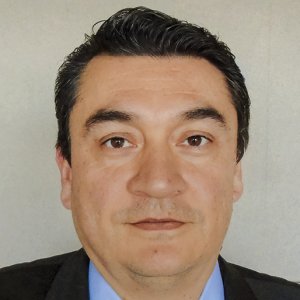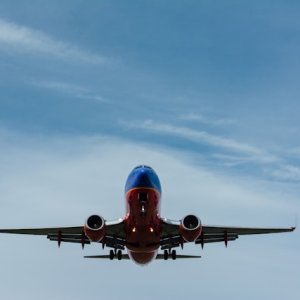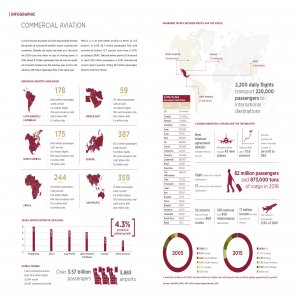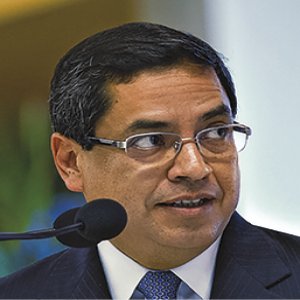Safety, Connectivity Go Hand In Hand

STORY INLINE POST
Q: How important is connectivity for the airline industry?
A: Connectivity is all the rage in the industry. Even in the avionics sector that has traditionally been more reserved in this regard because of its critical nature, connectivity is increasingly important. Thales has been involved in the aviation connectivity business for a good number of years. Passengers are coming to expect similar levels of connectivity while on an airplane as in their homes. Not only is connectivity important for the passenger who wants be able to interact with the open world during a flight, but it becomes and operational enhancement tool for the crew to maintain connection with ground crews to streamline operations and reduce turnaround times.
This is a similar use of connectivity that is envisaged in smart cities, where governments can control energy consumption and traffic flows and monitor security through cameras. For these systems to work, governments need data that is integrated, analyzed and presented in an accessible format. In the avionics sector, pilots, crews and passengers want to be more connected as technologies evolve.
Q: How is Thales contributing to aircraft connectivity?
A: Our connected electronic flight bag (EFB) devices offer services to pilots and airline operations centers, enabling them to share information for mission planning and operations. In addition, EFBs equipped with open world technologies can offer pilots additional data and services like real-time weather monitoring during a flight. This future cockpit entails a more intuitive human-machine interface (HMI) that provides the pilot with the right information at the right time and displayed in a way that allows them to reach a decision easily. Thales is also a world leader in in- flight entertainment (IFE) systems and we are deploying systems that are fully connected. Today, passengers can play games, listen to music, watch movies and live stream television as well as shop online through their IFE systems
Q: How is Thales addressing the technological development of aviation in Mexico?
A: Thales started working in Mexico in 1965 when we provided the first civil air traffic control radar to the airtraffic control authorities at Mexico’s SENEAM (Services for Navigation in Mexican Air Space). We have been the main provider of air traffic control systems to the civil aviation authorities in Mexico since then. There are four Air Traffic Control Centers (ACC) in the country and Thales has provided systems to all of them so all have a common system operating with common software. The company has also provided 21 of the 26 radars for air traffic control (ATC). These radars constitute 80 percent of the civilian radar systems in Mexico. Thales has the bulk of the navigational aids market in Latin America and is one of the main ATC systems suppliers worldwide. Today, two out of three aircraft in the world either lands or takes off with the help of a Thales system.
Q: How would you describe the level of Mexico’s connected infrastructure in comparison to the rest of the Americas?
A: Mexico is hungry for innovative technologies. As both private companies and public-sector customers are keen to adopt the latest solutions, Mexico has top-of-the-line technology implemented throughout the country and is a world leader in ATC systems. Thales’ strategy for the Americas includes providing total onboard connectivity through satellites. The company has signed an agreement with satellite operator and manufacturer SES and broadband operator Hughes to provide telecommunications coverage over the Americas via satellite. This service should start operating by the end of 2018. The company also signed an agreement with SES for the construction of the new Ka band High-Throughput Satellite (Ka-HTS) that will be launched in 2020 to provide coverage to a large part of North America, South America, the Caribbean and the Atlantic. Once this system is operative, all flights from the US to South America will have total connectivity to Europe.
Q: What is Thales Alenia Space’s value proposition in its bid to build the support satellite for Morelos III?
A: That depends on the path the client wishes to follow. SCT is looking for a leasing agreement with an operator rather than a satellite manufacturer. Thales can provide whatever capacity SCT needs, but we need to partner with a satellite operator. We can work together with any satellite service provider to offer customers the right hardware to put in space. Thales is the number one payload manufacturer worldwide as it builds the satellites and their onboard electronics and also defines the bands in which the satellite will operate. Thales can meet any expectation for this L-band satellite by working together with the Mexican government’s operator of choice.
Q: Beyond its production of security and transportation systems, in which segments would Thales like to work?
A: Thales is interested in doing more in avionics, particularly products related to IFE systems. This is not a decision that has been taken, though. Thales is developing software and installing urban security systems in Mexico. In the security industry, Thales together with its technological partner Telmex implemented one of the largest urban security systems in the world in Mexico City. We placed 15,000 cameras around the city and built the C5 command center and five smaller command centers called C2s. We created another two mobile C2s that are used at concerts and events. In this industry, Thales is looking to offer video analytics services in Mexico City. In the transportation sector, Thales provides tolling systems for CAPUFE and concessionaries that operate highways and tolling systems, ticketing systems for several Metrobús lines and signaling and communication systems for the Mexico-Toluca train.
Q: What are Thales’ most important contributions to the aerospace industry?
A: Over 360 (ATC and ACC) Thales TopSky solutions, 7,000 navigational aids and 700 surveillance radars have been implemented worldwide and are operated by 16,000 air traffic operators. The most important airports where Thales’ systems are being used are AICM, Bangkok International Airport and Cairo International Airport. Also, Thales has been awarded the UK Ministry of Defense’s Marshall Project for a UK-side airfield air traffic management transformation project and Australia’s OneSky project for joint civil and military air traffic management.
In Latin America, the company has delivered over 170 radars, 25 ACCs and several navigational aids. Approximately 70 percent of all radars operating in Brazil were manufactured by Thales. We provide Embraer with navigation and GPS systems for their KC-390 military jet and have a significant IFE activity in Chile, especially for LATAM Airlines’ Boeing 767 aircraft. In Mexico, Thales’ systems are used to control landings and take-offs at AICM and other Mexican airports.
Q: What role will the acquisitions of Guavus and Vormetric play in Thales’ long-term strategy?
A: The acquisition of Guavus is mostly related to Big Data, data mining and artificial-intelligence solutions. The more systems evolve, the more sensory information needs to be integrated to manage this input. Finding the relevant information that needs to be presented to the user through the exploitation and exploration of data has become an increasingly complex challenge. The acquisition of Guavus is important for us to overcome this challenge.
Implementing cybersecurity in systems is also a particularly relevant trend in the avionics segment and the acquisition of Vormetric enables Thales to improve in this segment. The consequences of someone fiddling with an airplane’s or a control center’s critical systems can be dramatic if the appropriate security measures are not in place. We are thus actively integrating cybersecurity solutions into new and some existing products as customers are more aware of the risks entailed by hackers intruding into their systems. The company is gaining more experience in data processing and cybersecurity both from its regular operations and its mergers and acquisitions.
Q: How can the avionics sector take advantage of Big Data?
A: Integrating Big Data analysis into the aircraft enables a better analysis of passenger engagement and to personalize the experience passengers have in the air. Being able to perform this analysis in real time and provide comprehensive information is helpful for the airlines to monitor passenger behavior and to win the loyalty of the users. In this sense, when NAICM is completed Thales and its solutions will be valuable.
Q: How is Thales planning to further contribute to NAICM’s development?
A: Thales wants to maintain its position as ATC systems supplier to NAICM authorities. The company will continue introducing navigational aids, NAICM’s ACC and radars. We have started working on a value proposition for NAICM regarding the airport’s security perimeter, its operational control centers, internal communications systems, biometric security systems for restricted areas, check-in kiosks for passengers and anything related to the communications systems inside NAICM’s terminal. We are aware that NAICM is not only about air traffic control, but also about land operations. Thales wants to take part in any future train and bus line projects that go to and from the airport. There are many opportunities for the company to take part in the development of NAICM. This constitutes a key priority for the company as the call for tenders will come out at the end of 2017 and the beginning of 2018.
























